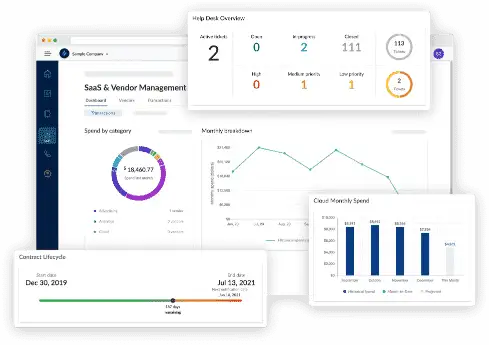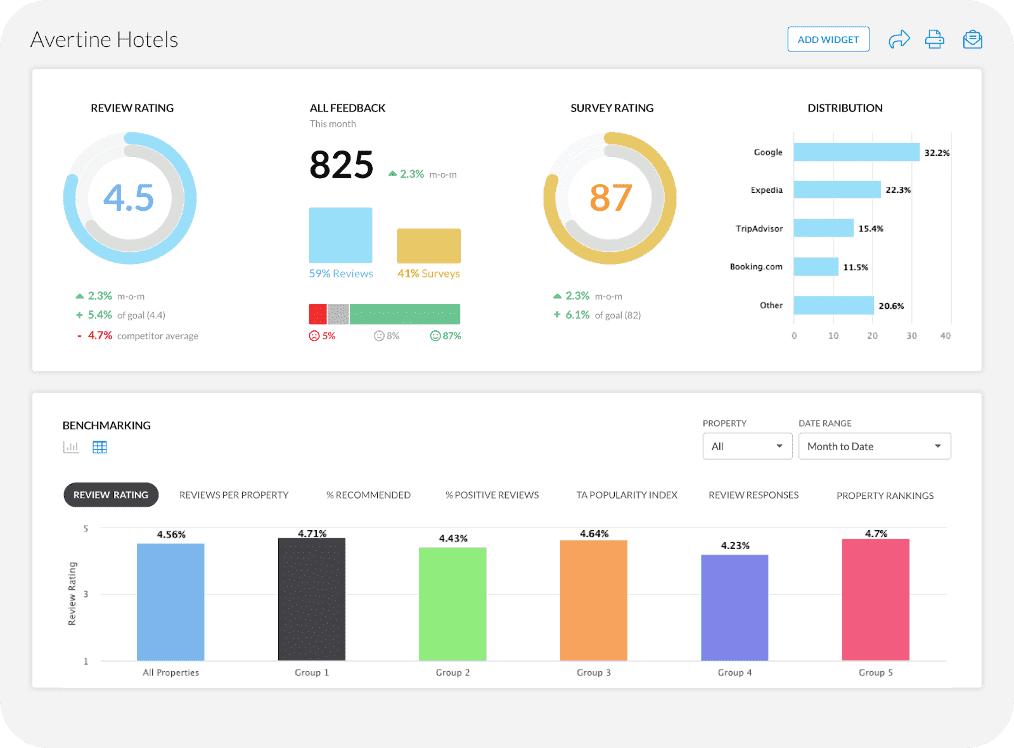According to BuiltWith, out of the 1 million websites with the highest traffic, 155,670 use React. Moreover, 6.6% of websites that use JavaScript libraries use React. This is because React has changed the way we build modern web applications. And that’s why businesses choose to hire React developers.
Also, its component architecture makes user interfaces modular and easier to manage. However, as you start creating components, one concept becomes important to understand: Props.
So, what exactly are React props? In this guide, we will explain what props are and how you can use them effectively. Moreover, we’ll explore the differences between props and states.
What Are React Props?
A key idea in React that enables data to move across components is props, short for properties. They are also necessary in order for a parent component to communicate with a child component. Moreover, this enables the parent to control and customize the behavior or appearance of its child components without altering their internal structure.
You can think of props as the arguments you pass to a function. Moreover, just as functions receive arguments and work based on the input, React components receive props and render their content accordingly.
For example, you wouldn’t make a different button for each label if you were developing a button component that shows labels like Submit or Cancel. Alternatively, you may create a generic button component and set the text using properties. Hence, this way, you can reuse the same component across your application and simply change the label as needed.
Props are also very helpful in real-world applications when you wish to effectively reuse components. You don’t want to develop a different component for every product, for instance, if you are presenting a list of items. Alternatively, you might construct a single product component and utilize props to enter various product details for each item, such as name and price.
Why Use React Props?
Promote Reusability
One of the biggest advantages of using props is component reusability. Instead of building separate components for every variation of content or layout, you can create generic and flexible components through props. For example, by simply giving several props to it, a single Card component may be used to display a profile or a product.
As a result, this guarantees uniformity throughout your program and saves development time. Instead of modifying several comparable components, you simply need to make changes in one location when modifications are required.
Enable Dynamic Content
With props, components can display dynamic content based on the data passed to them. Moreover, this is especially useful when working with APIs or any form of dynamic input. Props also enable your program to adapt the user interface in real time in response to data changes.
For instance, you may loop over the data and send specific user information as props to a reusable Userprofile component if you retrieve a list of users from an API. This renders personalized information for each user without modifying the component itself.
Clear Data Flow
React follows a unidirectional flow model, meaning data flows from parent components to child components. Moreover, props are the mechanism that makes it possible. This structure creates a predictable and manageable data flow, making your application easier to debug.
Since data only flows in one direction, you avoid confusion around where changes are coming from. This also reduces the likelihood of bugs and unexpected behaviors.
Separate Concerns and Responsibilities
Props helps you build modular components that are self contained and focused on a single responsibility. Instead of tying a component’s logic and content together, you can keep its functionality abstract while feeding it various types of content or behavior through props.
This separation of concerns makes your components cleaner and easier to maintain and test. Moreover, it aligns with core React principles like composition and declarative programming.
Support Configurability
Props make your components configurable. You can think of them like the dials on a machine, you can adjust various settings without having to write how the machine works. This kind of flexibility makes it easy to meet different design requirements or roll out feature variations with minimal effort.
Improved Readability
Because props explicitly define what data a component expects, they make your code easier to read and understand. When another developer looks at how you use a component, the prop acts like documentation. Hence, this also makes debugging easier. So, if something goes wrong, you can quickly trace the issue by examining how and where props are passed.
Improved Collaboration
Props enable developers working in big teams to create separate parts that are simple to include in the larger program. As long as you specify and document props, a team member can construct a component to take specific props without being aware of the precise location or method of usage.
As a result, this promotes a more scalable and cooperative development process, where components become building blocks that other sections of your application can use.
How to Use Props in React?
Pass Props from a Parent to a Child
As data flows from the parent component to the child component, this means you should customize or configure the child component. You should provide it with values in the form of key value pairs.
For instance, a parent component may send down a prop when displaying a button. This makes it possible for the same button component to appear and act differently based on the situation.
Use Props in a Child Component
When a child component receives a prop, it might utilize that information to decide what to show or how to act. The child component only utilizes the prop without altering it.
This approach makes the component adaptable and eliminates the need to write different versions of it for each possible input.
Combine Multiple Props
A component will often need more than just one piece of data. Moreover, you can pass multiple props to a component to give it everything it needs to function. For example, an article card might require a title and an image URL.
Use Props to Trigger Behavior
Props aren’t just limited to displaying static content. You can also pass functions as props. This makes it possible for the parent and child components to communicate.
For example, a function that was sent down as a prop from the parent component can be triggered by pushing a button in a child component. Because of this, it’s an excellent way to regulate and arrange events, such as form submissions or toggles.
Props are Immutable
One important rule in React is that props are read only. Hence, this means a component cannot directly change the value of the props it receives. Moreover, they are meant to be consistent and unchanging once delivered to the child.
Also, if a component needs to manage or update data, that should be handled with state, not props. Props are just the delivery mechanism, not the place for internal changes. Hence, this immutability ensures your components remain predictable and prevents unexpected side effects, especially in larger applications.
Use Descriptive and Consistent Naming
When using props, naming them clearly and consistently is important. Proper names make it obvious what the data represents. For example, using userName instead of name can prevent confusion if multiple types exist. Also, using meaningful names helps other developers understand your code faster and reduces the risk of missing props.
Prop Validation
It’s a good idea to validate props to ensure that your components are receiving the correct data, even if you may use any form of prop using React. Additionally, this lessens problems and increases the dependability of your program.
Differences in Props and State in React
| Aspect | Props | State |
| Mutability | Immutable | Mutable |
| Ownership | Controlled by the parent component | Controlled by the component that defines it |
| Purpose | It’s used to configure or customize a component | It’s used to manage dynamic behavior and interactivity |
| Data Flow | Data flows from parent to child components | Components manage their own data |
| Component Reusability | It promotes reusability and consistency | It often limits reusability due to internal dependencies |
| Lifecycle Changes | It changes when the parent passes new props | It can change anytime during the component lifecycle |
| Usage Example | Configurations and user data passed down | Form input values and modal visibility |
| Predictability | Easy to trace and debug | Requires tracking updates for debugging |
| Use Case | When external data needs to be displayed | When components need to respond to events or inputs |
Common Mistakes with Props and How to Avoid Them
Modifying Props Directly
Trying to alter a prop’s value inside a component is among the most frequent errors. Additionally, React props are immutable, which indicates that a value given from the parent component shouldn’t be changed by the child component. Changing props also throws off React’s reliable data flow, which can lead to confusing errors and unanticipated side effects. Consequently, you should either lift the state up to the parent or create a local replica of the value in the component’s state if you need to change a prop value. Hence, any updates are managed internally without affecting the original prop.
Overusing Props for Internal Logic
Another issue is relying too heavily on props for handling internal component logic. While props are great for configuring components and making them reusable, they are not meant to control internal behavior like form input values or handling user interactions. Using props for these tasks can clutter your components and reduce flexibility. Instead, use state for data that changes over time or in response to user actions, and reserve props for static values that come from parent components.
Not Validating Props
Unexpected problems can arise if React components’ props are not validated, even though they frequently presume specific types or structures. When working in teams or on big programs where components are regularly reused, this is particularly challenging. Without validation, a developer might pass the wrong data type or forget a required prop entirely. To avoid this, use PropTypes to clearly define the expected prop types and mark essential props as required. This adds a layer of safety and helps other developers understand how the component should be used.
Passing Unnecessary Props
It’s tempting to pass down all the available data a child component needs. But this can quickly lead to bloated components and a tangled prop chain. Passing unnecessary props increases coupling between components and decreases maintainability. The better approach is to be deliberate and only pass what’s required for a component’s functionality. Hence, if a child component needs access to deeply nested data, you should consider restructuring or using context APIs.
Using Props Without Default Values
When a component expects a prop but doesn’t receive one, it can crash or behave unpredictably. This typically happens when developers forget to set default values for optional props. Moreover, React doesn’t enforce prop values, so if the parent component fails to send one, the child component can run into undefined errors. To prevent this, always assign default values using defaultProps or by setting default values inline when destructuring props. Hence, this ensures your component stays reliable and avoids runtime issues.
Coupling Child Components to Parent Logic
Props provide flexibility and separation of concerns. However, sometimes developers tie child components too closely to the logic of the parent. For example, hardcoding assumptions about what a prop should contain or relying on very specific data structures can reduce the reusability of the child component. To avoid this, build child components to be generic and flexible. Hence, they should rely on the props they receive without knowing too much about where they came from or how they were created.
Final Words
React props are essential for building dynamic and maintainable components. Moreover, they ensure clean data flow and support scalable development. So, by mastering props, developers can create flexible UIs with better structure and readability, hence making props a cornerstone of efficient and effective React applications.



















